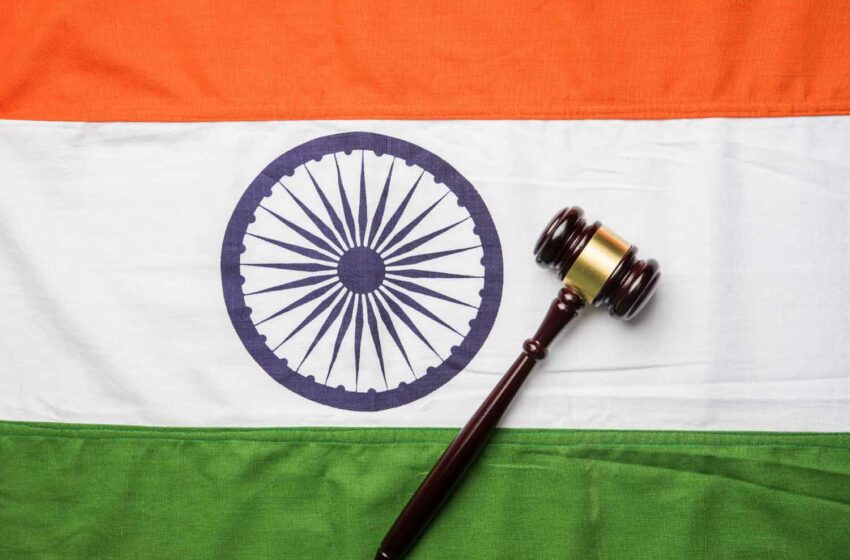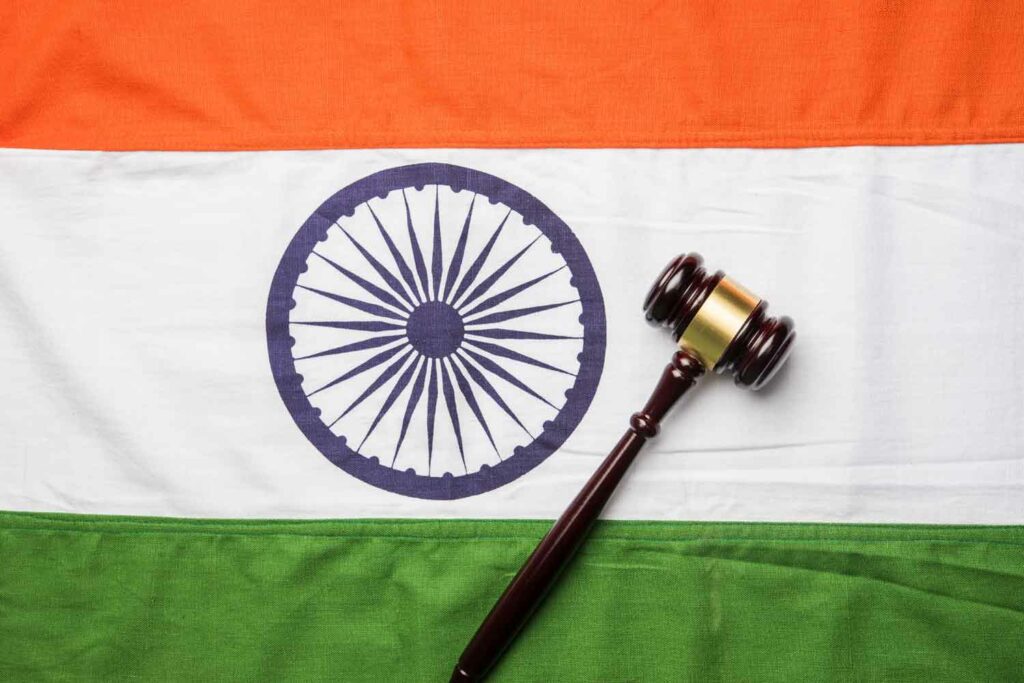A Perfect Storm
- Also in TR Print Edition
- May 1, 2024
- 0
- 10 minutes read


How India came to deny consumers legal access to safer ways of consuming nicotine.
By Samrat Chowdhery
India’s ban on commercialization of electronic nicotine-delivery systems (ENDS) in 2019 was the blunt political end to a meandering administrative and legal process that began after the World Health Organization Framework Convention on Tobacco Control (FCTC) stated of ENDS in a report presented at its sixth general body meeting held in Moscow in 2014: “while medicinal use of nicotine is a public health option under the treaty, recreational use is not.”
This early denial of harm reduction principles and mistaking product evolution and substitution for market expansion by the tobacco industry led many developing nations to begin formulating policies to ban e-cigarettes even as they were undergoing rapid development by small-scale Chinese producers—becoming safer, affordable and more effective in helping smokers switch.
In India, the then Union health minister, Harsh Vardhan, who was well-steeped in the WHO mindset through his earlier work in establishing smoke-free public spaces policies in the 1990s as a state health minister, formed committees soon after the FCTC meeting to evaluate the impact of e-cigarettes. Staffed with experts from the same WHO-linked tobacco control ecosystem, the committees recommended a complete ban. Notably, another panel formed by the commerce ministry to study ENDS favored the regulatory approach but was overlooked.
In an unexpected twist, the health minister was thereafter reshuffled to another ministry in late 2014, and the issue remained on the backburner until 2019 under the incumbent, although a slow-paced administrative and legal battle continued. The health ministry, through various regulatory bodies, tried to outlaw e-cigarettes, first by claiming they contain nicotine, which requires these products to gain medical approval, and thereafter by stating nicotine is governed by the Poisons Act, which forbids its sale as a consumer product. Both claims were shot down by courts that consistently indicated favor toward the regulatory pathway.
This deadlock continued until Vardhan was reappointed health minister when his party swept back to power in mid-2019 with an absolute majority. Strengthening his hand was a perfect storm. A major push to ban vaping was being led by tobacco control nonprofits linked to funding from Bloomberg Philanthropies. Among them were The Union, the Campaign for Tobacco-Free Kids (CTFK) and Vital Strategies, which had been lobbying state governments to ban e-cigarettes. With the central government now on board, the wave became a tsunami, and soon, over 15 Indian states had declared a ban on vapor products.
An underlying economic factor could also be that U.S. e-cigarette maker Juul, which had captured 70 percent of U.S. market share in under two years, announced its entry into India earlier that year, spooking the Indian tobacco industry, which until then had made little effort to develop vapor products, perhaps because the regulatory cloud cast on them since 2014 made long-term investment a risky proposition. Data revealed recently through a Supreme Court directive shows that India’s dominant tobacco company, ITC, donated upward of $11 million to the ruling dispensation a few months before the vape ban. However, it is unclear if this was to influence the ban, to favor or oppose it, or if it was part of election-time funding corporations often provide.
Nevertheless, the insistence by Juul, which publicly led the pro-vaping side, on relying on foreign experts who did not well understand the complex and opaque Indian tobacco ecosystem; lack of homegrown research and tobacco cessation researchers who could have countered the anti-vaping narrative from the local network developed by Bloomberg-funded nonprofits; as well as the absence of the local tobacco industry from the debate were all contributing factors.
What followed in rapid succession was to counter the opposition from courts by first banning research into e-cigarettes, followed by a “white paper” by the country’s top government-controlled research body, which cherry-picked research to make a case for a complete ban. This became the basis for an executive order prohibiting the sale of e-cigarettes and heated-tobacco devices, which, breaking from tradition, was announced by the finance minister. Stocks of Indian tobacco companies spiked after the news.
The bill was debated in Parliament a few months later, where after a lengthy but low-quality debate as many politicians admitted they had not seen these devices and despite allegations of favoring the local tobacco industry and over 60 specific objections to the law, it was passed by brute majority. Vardhan was honored by the WHO with its top award for implementing the e-cigarette ban while The Union and the CTFK congratulated the Indian government along with claiming credit for the legislation. It was win-win for all, those selling tobacco and the ones opposing them, except the over 100 million smokers who had been denied legal access to safer ways of consuming nicotine, as well as the independent e-cigarette vendors, most of whom moved shop to Dubai when a Juul-led court challenge to the ban failed to bring relief.
The Fallout
After a year or two of realignment, which saw the vapor market change hands from rule-conscious vendors to black market operators who added e-cigarettes to their portfolio along with smuggled cigarettes (which constitute over a quarter of the market), mobile phones, gold and other prohibited or tax-evaded goods, the full scale of untended consequences some parliamentarians, policymakers and international experts had warned about started becoming apparent.
The first was a product shift from mod-based devices to much cheaper disposables, which had lower barriers to entry and could be stocked by streetside vendors who have become accustomed to and adept at violating tobacco control laws such as the bar on selling loose cigarette sticks and the ban on gutka and pan masala. It did not take long for these substandard and untested, though affordable, single-use devices from becoming available in small towns across the country, growing the illicit vape market into an industry worth billions as smokers voted for their health by trying to switch while teens had a lot freer and cheaper access to them, the key rationale for the ban. The constituents that suffered were older and women smokers, for whom risk reduction could be most beneficial but who are least likely to engage with the black market. Many of them who had switched went back to smoking.
A public health opportunity to convert over 100 million smokers and save lives with minimal stress on state resources while earning tax revenue and creating jobs, especially when unemployment rates are soaring, was lost and replaced by increased criminality, lost revenue, heightened risk for adult switchers as these products have not undergone quality checks, and easier access for teens and unintended users.
The ban led to a short-term windfall for the local cigarette industry with most companies witnessing steady rise in valuations—ITC’s market cap recently overtook BAT’s—especially with the additional sop of the government not raising taxes on cigarettes and other tobacco products for three consecutive years. Yet, despite these remarkable industry concessions for a country hailed as the leader in tobacco control among developing nations, the picture is beginning to look less rosy by the day for local tobacco companies as these switchers are their lost customers who, given the high quit rates for smokers who try vaping, will likely never be back nor will those who are being introduced to recreational nicotine through e-cigarettes as there is little empirical evidence for the gateway theory.
Failure to preempt shifting consumer behavior and the ensuing black market explosion, that too in a competing future category in which they are now prohibited from participating, could have significant implications for the Indian cigarette industry as no amount of protections and launching sticks in new flavors, which is partly responsible for sustaining cigarette sales, can compete with the users’ desire to safeguard their health and consume nicotine in less harmful ways.
The Challenges Ahead
Despite the central government’s ban on e-cigarette research and the media gag on publishing anything pro-vaping, despite the ban on carrying vapes through flights even though their use is not prohibited and despite Bloomberg Philanthropies pumping in a large tranche of funds for anti-vaping efforts, it is hard to miss the rapid transformation taking place in Indian towns and cities as smokers switch en masse to vapor devices.
An additional pain point for the legacy industry could be the South African experience of the difficulty in shaking off the black market once it takes hold. Even if vaping was legalized in the near term, the legitimate taxed products will find it hard to compete with the cheaper illicit ones, more so when the consumers have been introduced to vaping through the black market.
The challenge also lies in re-educating the medical fraternity on nicotine—eight of 10 doctors in India believe nicotine causes cancer—such that they understand the role risk reduction can play in reducing tobacco-related mortality and morbidity and sign on to help people struggling to quit toxic forms of nicotine use, or those who do not want to, lower risks by switching to much less harmful alternatives. This will be a tough barrier to cross because high nicotine illiteracy has led to proposals to overturn even the 2014 Moscow statement by restricting access to medical nicotine by making nicotine-replacement therapy (gums and patches) available only through prescription.
But it is never too late to course correct, and there appears to be some signaling from the ruling dispensation, which, if opinion polls hold, is set to return to power in the ongoing national elections (the opposition already favors regulation over a ban). The home ministry recently restricted the funding of the CTFK, a significant anti-vaping voice in the country, along with its key local partner while pro-government media is beginning to publish in favor of tobacco harm reduction again. It must not be hard to see the health and economic rationale for ending the ban on safer nicotine alternatives when it is not working anyway.

